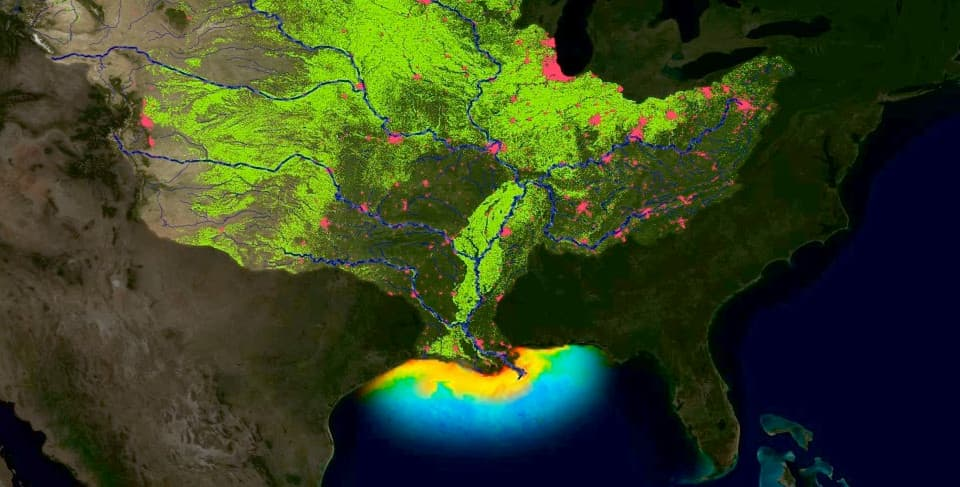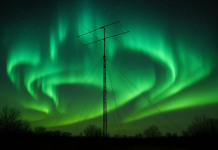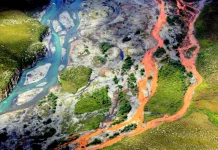Every spring, the Gulf of Mexico sees a major die-off of marine life where the Mississippi River meets the Atlantic Ocean.
But this year, it’s different – bigger, more pronounced, and very likely to be caused by human activities.

At more than 3,360-square-kilometers (8,700-square-miles), the dead zone in 2019 is expected to be the area’s largest in 30 years and the second largest since researchers began measurements in 1985.
The mighty Mississippi River
As the Mississippi River bisects the country, it catches as much as 41 percent of inland waters, from Idaho to New York State, that eventually drain into the Gulf of Mexico.
Flowing in these waters are unnatural levels of nitrogen and phosphorus used in fertilizer products for agricultural production throughout the Midwest. These levels cause what is known as eutrophication, or the suffocating of marine life when ocean systems are enriched with nutrients beyond natural levels.
“This may be the second largest on record or even the largest,” said lead researcher Nancy Rabalais, adding that it’s possible these levels could still increase. “The river is still in flood and the nitrogen concentrations are going up. The two multiplied together to provide the nitrogen load.”

Historic Hypoxia
Historic flooding throughout the Midwest may very well have led to the increased area encompassed by the dead zone as floodwaters washed over agricultural fields and eventually drained into the Gulf.
Hypoxia is a natural phenomenon and exists around the world’s marine environments, but human-caused events have been increasing due to more intensified agricultural production over the last 50 years.
Bigger, more detrimental dead zones cause ecosystem-wide damage as nutrient-rich fresh water from the river fuels phytoplankton growth or algal blooms. When this alga dies, it sinks to the bottom where it is decomposed by bacteria that use up oxygen from the water, ultimately suffocating organisms that cannot move away, such as shrimp, crustaceans, and bottom-dwelling fish.
“They need to leave or die. Those that live in the sediments, and form the base of the food chain for the fish and shrimp, are usually killed off, and the diversity is reduced, even after the low oxygen returns to normal,” said Rabalais, adding that the dead zone has implications on the economy and human health.
The Gulf of Mexico is one of the most productive regions in the US and is home to a major shrimp fishery. As these organisms die off or move from designated fishing zones, those that rely on the animals for their livelihood are likely to suffer.
It’s important to note that the report assumes there were no significant tropical storms in the two weeks before or during the cruise, which could have changed the chemistry of the ocean waters. Furthermore, the area encompassed in the dead zone is just an early estimate and may very well be an underestimate. Rabalais says the full report is expected to be released in July.
[Gulfhypoxia, NOAA, IFL Science]












